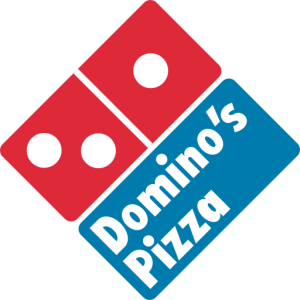Not to be confused with the Olympic sport nor divide that prevents your neighbours prying eyes, geo-fencing applications have grown from strength to strength. Since it’s first appearance in academic literature from Munson & Gupta (2002) geo-fencing has been used for a wide range of functions across multiple industries.
The location based advertising firm Verve reports marketing campaigns that utilise location based technologies receive an average click through rate of 1.21% compared to 0.61% without. Verve also found that consumers who received a geo-fenced advertisement were 3.9 times more likely to visit the advertisers store and 23% less likely to visit a competitors.
It has to be said that companies would be foolish not to somehow take advantage of these figures. So here are 3 examples of ways brands have used geo-fencing to boost sales.
Domino’s Pizza
Pizza companies have been delivering to hotels for years. Now that many chains utilise mobile check in and mobile keys it would have been crazy not to try and take a bigger slice of the action.
Using a selection of well known mobile apps Domino’s were able to target customers arriving at, and checking into, geo fenced hotels to push through deals for that specific location.
An ingenious tactic to take advantage of hungry travellers who aren’t familiar with the area and looking for a quick fix.
More details about the campaign can be found here.
Subway with Voucher Cloud
The money saving brand Voucher Cloud is providing some extra filling for Subway stores. Those users who have the app downloaded will receive offers through automatic push notifications from participating retailers when within the radius of the participating store.
Retailers can customise the geo fence size, messages and timings of notifications. They say to have received an average conversion rate of 30% with some days seeing click through rates of up to 45%!
This provides an interesting platform to gain impulse buys from consumers who may not have previously considered a purchase.
McDonalds Extended Hours Campaign
After extending a 1/3 of their restaurant opening hours from 11pm to 7am McDonalds had created a huge sales opportunity. The challenge though was to get people aware and drive footfall to only their participating stores.
Adverts where pushed to consumers through mobile sites that they found their target audience viewed but only whilst in the geo-fenced area around each of their restaurants. The mobile channel used for this campaign generated a ROI of £3.99. Enough for a very happy meal.
More details of the campaign can be found here.
McDonald’s Extended Hours on Vimeo.
It’s not all good news though.
Boxever explains how timing needs to be right. An individual who is in transit between locations isn’t a potential customer unless they are available to actively take up an offer. On your Monday morning commute to work you can’t stop in to take advantage of a BOGOF bowling offer however you would be able to on a Saturday afternoon when looking for something to do.
This shows that companies have to be careful with how they target potential customers to avoid wasting paid ads and not run the risk of pushing them away through bombardment. Kupper’s (2005) model of context aware and location based services shows how using other contexts besides spatial & location can support LBS’s.
The use of big data can help provide insights into the personal and social contexts of individual customers movements and in turn result in more personalised adverts and thus better conversion rates. Brown & Harmon (2014) also show in their viral geo-fencing process model how the input of social media data allows for the demographic of the user to be ascertained and in turn calculation of a reference group through their connections to allow for specifically targeted promotions. The McDonalds campaign looks at these aspects more so than the other examples allowing them to understand where their ‘night owls’ have come from and heading to.
To be able to use geo-fencing to your advantage you have to have somehow gained permissions on the users devices. As seen from the examples above you can do this through advertisements on websites and apps which will result in pay per clicks. Alternatively if you can manage to get a user to install your own app, you would only have to pay development costs.
Though geo-fencing technologies involve no sabres companies can become involved in digital duels. Dubbed geo-conquesting, some companies are fencing around competitors stores in aggressive attempts to pull away customers.
It makes you think.
Are there currently any restrictions of digital boundaries? You may own the rights to the land you live on but do you own the digital space within it?
Brown, R.L & Harmon, R.R (2014) Viral Geofencing: An Exploration of Emerging Big-Data Driven Direct Digital Marketing Services. Proceedings of PICMET ’14: Infrastructure and Service Integration.
Kupper, A. (2005) Location-Based Services: Fundamentals and Operation. Wiley: West Sussex
Munson, J.P. & Gupta, V.K. (2002) Location-Based Notification as a General-Purpose Service. WMC ’02 Proceedings of the 2nd international workshop on Mobile commerce. pp. 40-44.


According to Value Market Research, the latest technology trends and global market opportunity analysis in the Geofencing Market industry growing with a high CAGR in the upcoming year. Our report has categorized the market based on technology, service, development, vertical and region. https://www.valuemarketresearch.com/report/geofencing-market
Thanks for giving us information about GEO FENCING EXAMPLES .
Elevate your style with a Kids Suit. Embrace sophistication and stand out in the crowd. Shop now for a touch of floral finesse!
Unlock Security and Style with Our Roller Shutters! 🚀 Discover Sleek Designs for Ultimate Protection! 🏡 Click Now for Exclusive Deals! roller shutter
Great insights! Digital marketing has truly become a game-changer for businesses in today’s fast-paced world. https://nyasa.co.in/ Agencies like yours are making it easier for companies to grow online. We also specialize in helping brands achieve their online marketing goals and have seen remarkable results. Keep sharing such valuable information!